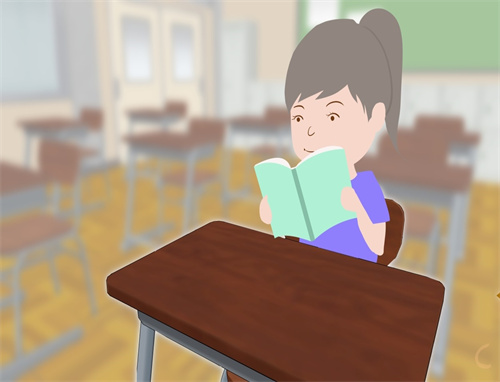在备考雅思阅读的过程中,或是任意一项英语类测试,如果能够主动的增加英语的曝光和输入,是对于提高英语阅读能力非常有帮助的一件事情。下面小编就和大家分享雅思阅读题源精读,希望能够帮助到大家,一起来学习吧!
雅思阅读题源精读
今天克里老师专门挑选了和雅思阅读考试篇章非常贴合的一篇文章,并且也是雅思阅读选取文章重要来源之一的有名外刊--‘The Economist’,并且找到了其中一篇关于人工智能(artificial intelligence)的文章节选,来进行解析和学习。
接下来这段话,主要讲了作者结合实际情况,表达了自己对AI的看法:
The thing to remember about the next decade is that current AI can't even read; it also can't reason.
(对于AI技术下一个十年的发展,我们可以确定的是,现阶段的AI技术,依然还是不能够进行有效的阅读和推理)
Four years ago, machine-learning pioneer Geoffrey Hinton said that radiologists would lose their jobs in five or ten years; radiologists got really scared, a lot of people stopped studying radiology.
(四年前,人工智能行业内的先驱GH说过,放射科医生会在五到十年内失去他们的工作,这使得很多从事相关领域的人感到担忧,也导致很多人停止了对放射学的研究和学习)
So far? Not one radiologist has actually been replaced.
(但是到现在为止,没有一个放射科医生被人工智能所替代)
Radiology isn't just about looking at images
(因为放射学不仅仅只是关于看图像这么简单),
it's also about reading (patient histories) and reasoning (about how to put words and images together) and machines can't yet do that reliably.
(它还包括了阅读和处理信息的能力,这主要体现在研究和了解研究病人的过往病史,以及如何利用推理能力将图像信息成功的用文字表达出来,然而,现在的人工智能机器并不能有效地做到这个程度)
What we have now are our new tools that can help radiologists, not radiologists-in-a-box.
(所以,我们现在能看到的,是放射科医生利用更多先进和新发明出来的仪器工具来辅助自己完成工作,而不是一个机器的人工智能医生)
从这段话来看,我们发现了很多雅思阅读中常见的一些考法:
首先,一词多义
原文中使用了reason这个词,它可以表达原因,指因果关系,也可以作动词,表达推理的过程,可见一词多义本来就是我们在阅读中需要掌握的能力。雅思阅读真题中,就会经常到考多义词,比如说universal可以表达宇宙的,也可以指普遍的,通用的。
其次,高频考点词
考试中出现过的很多高频考点词,也在该段话中出现,比如说 replace,该词的意思为替代,在阅读的真题当中,曾经有考过多次关于这个词的替换,比如说,something can’t be replaced, 被替换成了something is not a substitute。所以在学习的过程中,克里老师推荐大家,一定要去累积、总结以及掌握一些高频的考点词,了解考点词在考试中的考法和规则,这样做题的过程中可以更加的高效,也让学习的过程更轻松。
雅思阅读考试技巧:分类题
分类题(Categorizing)
§ 在分类题中,一般有三个类别(我们可以称之为甲、乙、丙)以及一些项目,要求是将这些项目分别归入这三个类别之中。在文章中,一般会讲述两种不同的事物,我们姑且称它们为A和B. 类别甲中归入与A类事物有关的项目,类别乙中归入与B类事物有关的项目,而类别丙中归入与A和B都有关的项目。
§ 在文章中,作者会对A和B 两类事物进行分别探讨和互相比较,因此我们在阅读时就必须注意作者在谈论和比较A和B 的时候是否提到这些项目,并把这些项目归入到适当的类别中去。一般来说,作者会在不同的段落中讲述A和B 两类事物,不过有时A和B 会在同一段落中被提到,因为作者要把它们作一个详细的比较。
T: Desktop publishing
3 The first stage in the old method of preparing INFO was the gathering together of all text, photographs and graphics which would make up the bulk of the magazine. The next step was marking the text for the printer---a rather laborious, and occasionally hit-and-miss affair! In essence, this meant judging the approximate length of the articles and choosing appropriate print sizes and styles (fonts). The appropriately marked pages were then sent to the printer for type-setting. The end-product of this type-setting phase is called a galley and takes the form of continuous columns on long sheets of paper.
4 At this stage the fun begins! All the columns of text have to be cut and manually pasted onto sheets of paper marked out in columns, to give the layout for each page of the magazine. If one had misjudged the length of text at the type-setting phase, then screams of agony would mingle the pervading smell of glue in the editorial offices as a very stressed editor wrangles bits of text and photographs. The flexibility of this old system was very limited, page layout was largely pre-determined and type-setting errors meant long and time-consuming proof-reading, both at the galley stage and at the final page proof stage. An additional problem with the old method is the length of time between the copy date (stage 1) and the publication of the magazine (about six weeks for INFO).
5 Desktop publishing made our life a lot easier. Now with our new system, we first type the text of the article on an ordinary word-processing package (MultiMate Advantage II is used but any other package is usable) or we ask our contributors to send us their article on a disk, typed with almost any word processor on an IBM or compatible PC computer. The second stage is to design the page frame, i.e. size, number of columns and margins. We then place the text in the page with an easy command called “Autoflow”.
6 The third stage is the design of the layout: placing illustrations and choosing the most suitable typeface. At the last stage, we print the articles on the laser printer and pass them on to colleagues to be proof-read. After making all corrections, the files containing our next INFO are copied on to a disk and sent to our printers for publication.
Q: Below are headings showing the sages involved in printing any document. According to the
information in the passage:
write T if the stage is necessary in traditional printing;
write D if the stage is necessary with desktop publishing;
write TD if the stage is necessary in both methods.
I1 gathering input
I2 designing page frame
I3 marking text
I4 type-setting
I5 page design
I6 cutting and pasting
I7 proof-reading
解题:这里选取的是文章的第三到第六段,其中三、四两段谈论traditional printing(T),而五、六两段探讨desktop publishing(D)。在traditional printing中,首先是the gathering together of all text, photographs and graphics,其次是marking the text for theprinter,再其次then sent to the printer for type-setting,然后是have to be cut and manually pasted onto sheets of paper marked out in columns, to give the layout for each page of the magazine,最后是long and time-consuming proof-reading;而在desktop publishing中,首先是ask our contributors to send us their article on a disk,其次是design the page frame,然后是the design of the layout,最后we print the articles on the laser printer and pass them on to colleagues to be proof-read. 根据这些列出的两种印刷方法的各个步骤,我们可以准确地将上述的项目进行归类:I1 gathering input --- TD;I2 designing page frame --- D;I3 marking text --- T;I4 type-setting --- T;I5 page design --- TD;I6 cutting and pasting --- T;I7 proof-reading --- TD.
雅思阅读考试技巧:问答题答题步骤
回答问题(short-answer question tasks)
回答问题是根据所给文章或图表回答问题。在IELTS阅读测试中通常是用下列单词提问:. what、which、when、where、who、whose、whom、why、 how 等。除了利用上述单词进行提问外,有时会在答题指引中将所提问题列出。
回答问题答题步骤:
1. 仔细查看答题指引,了解回答何种问题。
2. 查看例句,确定答题方式。
3. 要确定问句的种类,一般疑问句可按正常形式回答(例如:yes/no),如果是选择疑问句或者是以wh/how开头的问句就一定要具体回答
4. 仔细理解问句所提问题。
5. 特别要注意问句中所提问题的关键词语(例如:单数、复数),以及问句中表明数量、时间、地点的词语。
6. 将问句中的关键词语与文章中相关句子中的词语进行匹配。
7. 确定问句与文章中相关句子含义是否一致,得出答案。
雅思阅读题源精读技巧
上一篇:雅思阅读思路技巧分享
下一篇:2020解答雅思阅读题需要几步





